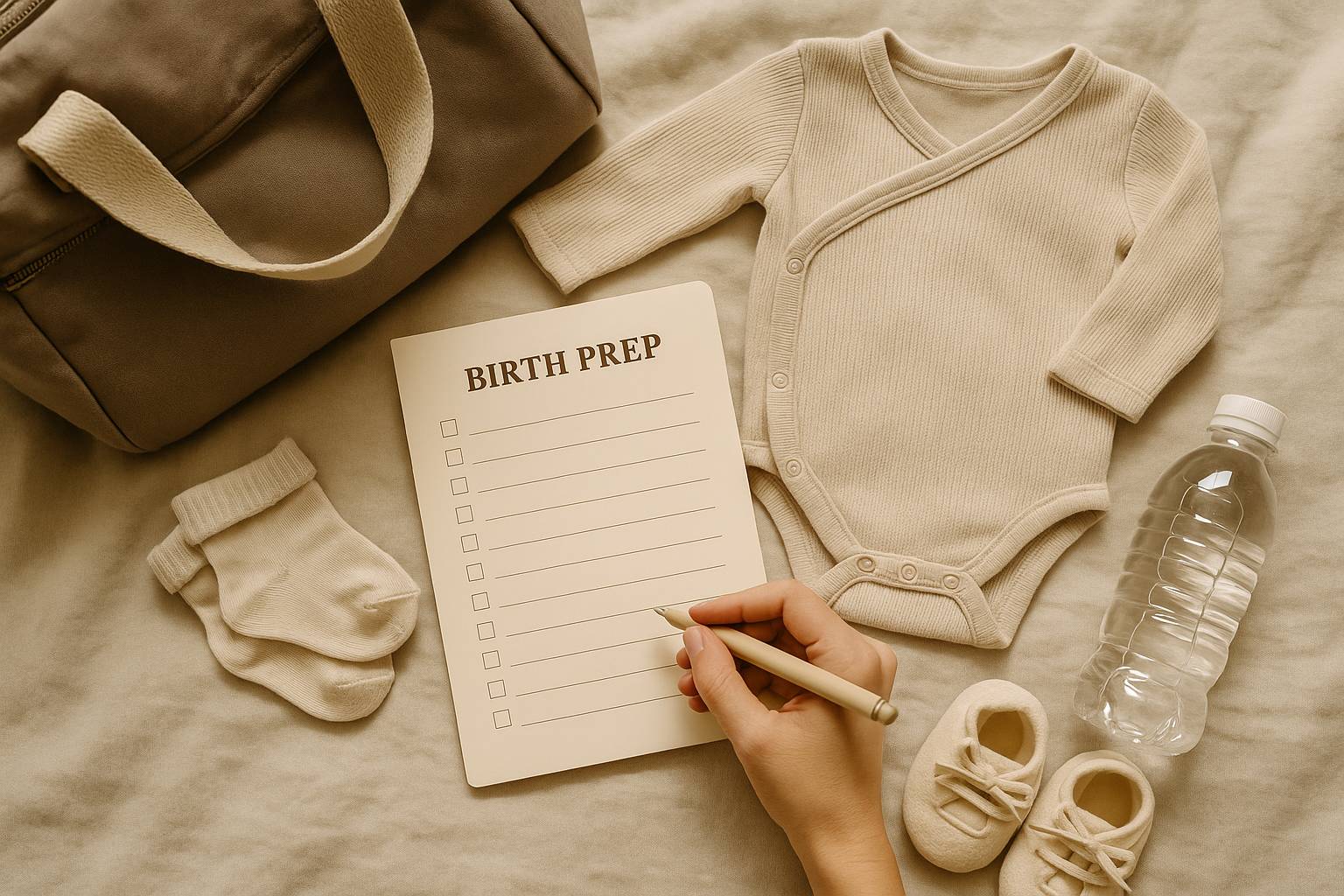
Birth Preparation
31 Jul 2025
Preparing for Birth: How to Get Ready for Labor and Delivery

Creating a Birth Plan: What to Include
A birth plan is a document that outlines your preferences for labor and delivery. While it’s important to remain flexible—since things can change rapidly during labor—having a clear plan can help communicate your desires to your healthcare providers. According to a study in *The Cochrane Database of Systematic Reviews*, women who develop a birth plan tend to feel more in control of their birth experience, leading to better satisfaction with the process.
Your birth plan should cover several key areas, including:
- Pain Relief Preferences: Do you prefer natural pain relief methods, such as breathing techniques or water immersion? Or would you like to discuss options like an epidural or medication? It's important to communicate your pain management preferences in advance.
- Support Team: Who would you like to have with you during labor? This could include your partner, family members, a doula, or a close friend. Knowing who will be there for you can provide reassurance and help you feel supported.
- Labor and Delivery Environment: Do you want a calm, quiet environment with dim lighting and music, or do you feel more comfortable with a more active atmosphere? Including these details will help set the tone for your experience.
- Post-Birth Plans: Do you want to hold your baby immediately after birth? Would you like to breastfeed right away? Many mothers find it empowering to have these preferences written down so they can be acted upon as soon as the baby is born.
Remember, a birth plan is a guide, not a set-in-stone contract. Flexibility is key, and it’s important to discuss your options with your healthcare provider well before labor begins to ensure your birth preferences are feasible based on your health and your baby's health.
Packing Your Hospital Bag: What to Bring
Packing for the hospital can feel like a daunting task, but having everything you need ready in advance can reduce stress as your due date approaches. A study published in *The Journal of Perinatal Education* found that having a well-prepared hospital bag can help reduce anxiety and allow mothers to focus on what matters most—labor and delivery.
- For You: Comfortable clothes for after delivery (loose-fitting clothes, a robe, and slippers)
- For Your Baby: Newborn clothes (onesies, socks, mittens, and a hat)
- For Your Birth Partner: Comfortable clothes and toiletries for the partner who will be with you
Prenatal Classes and Preparing for Labor
Taking prenatal classes is an excellent way to prepare for labor and delivery. These classes, which are often offered by hospitals or midwives, provide valuable information about the stages of labor, pain management techniques, and the best positions to use during labor. A study published in *The Journal of Obstetric, Gynecologic & Neonatal Nursing* showed that women who take prenatal classes report feeling more confident, less anxious, and more prepared for labor.
Prenatal classes typically cover:
- Stages of Labor: Understanding the three stages of labor and what to expect during each phase helps reduce fear of the unknown. You’ll also learn when to go to the hospital and what signs indicate that labor is progressing.
- Pain Relief Options: A key component of most prenatal classes is discussing various pain relief options, both medical and natural. The more you know about your choices, the better you can make an informed decision when the time comes.
- Breathing and Relaxation Techniques: Learning relaxation techniques such as deep breathing, guided visualization, and even hypnosis can help you stay calm and focused during labor.
The Mental and Emotional Preparation for Birth
While physical preparation is important, emotional and mental preparation are equally essential. The journey to motherhood is an emotional one, and understanding the emotional changes that come with it can make the experience smoother.
As you prepare for birth, consider:
- Positive Visualization: Visualizing your birth can help create a sense of calm and control.
- Mindfulness and Relaxation: Prenatal yoga, meditation, and deep breathing exercises can help keep you calm and centered.
- Support Systems: Surround yourself with people who provide positive emotional support.
Conclusion
Preparing for birth involves more than just packing a hospital bag—it’s about mentally, emotionally, and physically preparing for one of the most transformative experiences of your life. By creating a birth plan, attending prenatal classes, and seeking emotional support, you’ll feel more confident, empowered, and ready to welcome your baby into the world.
MOMent of me
This place grew from that moment- for every mom looking for a softer landing.
SITE BY MOMENT OF ME 2025